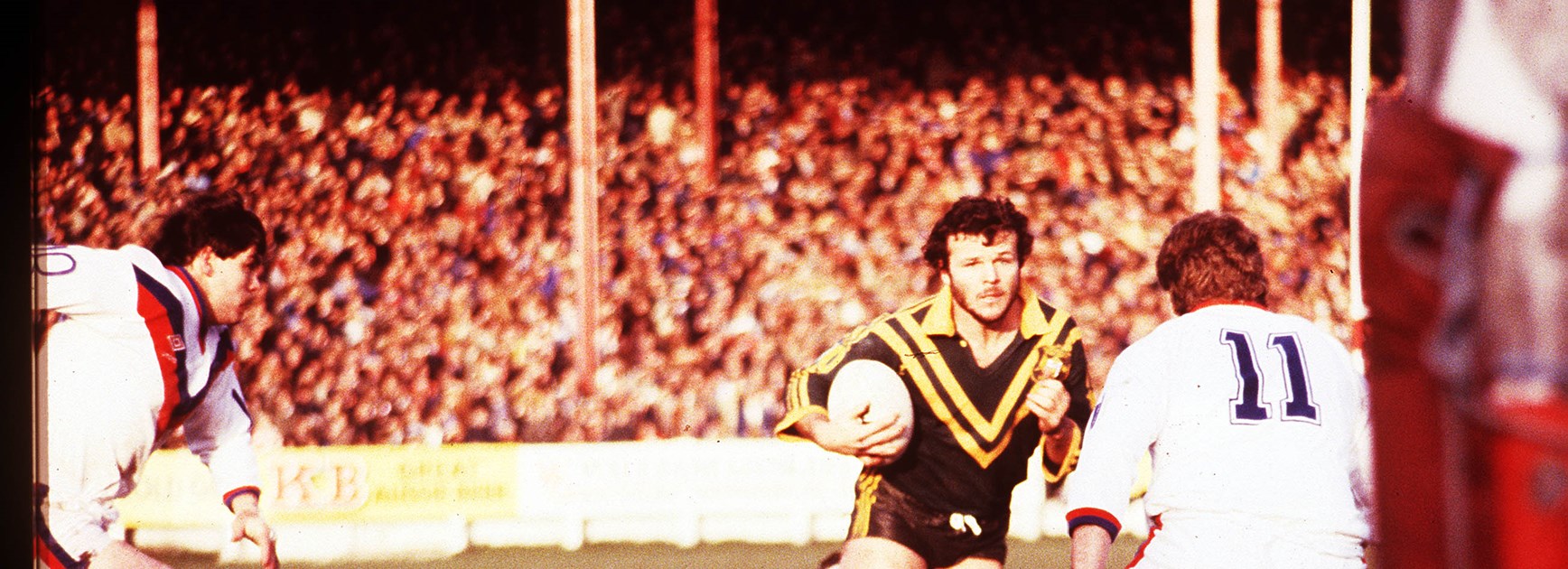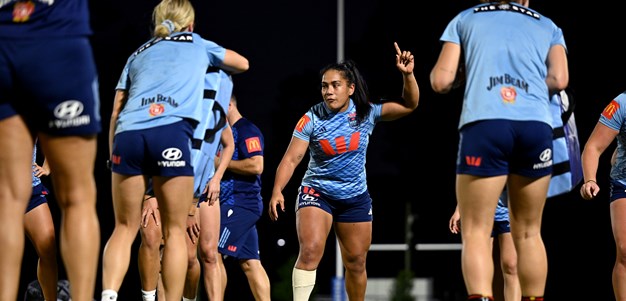By Roy Masters
More than 40 years after NSW forward Les Boyd struck the jaw of Queensland’s Darryl Brohman with an elbow in that drama-charged June 1983 State of Origin night at Lang Park, the shock waves persist, like ripples on a faraway pond.
Boyd’s imminent induction into the Australian Rugby League Hall of Fame has ignited further debate, demonstrating that the “Baby Faced Killer”, as the Sydney media dubbed him, is still the face that launched one thousand lips.
Yet there are circumstances about that Tuesday night in Brisbane from which Boyd was given a 12-month suspension, which are barely known.
It was the first game in what became a three-game interstate series only the previous year. It also followed the 1982 Kangaroos ‘Invincibles’ tour of Great Britain and France where tensions between NSW and Queensland became inflamed with the exclusion of two very high profile and mutinous Maroons: Paul Vautin who was not selected for the tour and Kangaroo vice-captain, Wally Lewis, who was benched for the first two Tests.
The rivalry extended to the selectors of the two state teams, an acrimony fuelled by a long lunch that June 7 day. The NSW selectors sensed Queensland’s determination to win via the selection of some hard heads, including Wally Fullerton-Smith and a vengeful Vautin. The Blues selectors identified Boyd, who played all three Tests on the 1982 tour in the front row, as the only player who could stand up to a strong Maroons pack. Aware their own futures as selectors would be imperilled with a loss, the selectors lurched into the NSW dressing room. They isolated Boyd but their instructions were heard by his teammates, including fellow Manly player, Ray Brown.
“They were geeing Les up,” said Brown. “Telling him to get into the Queenslanders. They were really revving him up, saying, ‘Go out and smash them, Les.’”
It could never happen today because selectors have gone the way of leather footballs, with the NSW Origin coach choosing the team in consultation with trusted lieutenants. But the same heavy penalties for violence operated and the same multi-camera coverage of games existed, meaning illegalities rarely went undetected.
Sure, Boyd could have ignored the selectors and some readers might accuse me of hypocrisy, saying I had a reputation for exciting fury in players. However, a club coach always suffers if he pushes a player too hard, if only via the loss of the player from the team from a long suspension.
In any case, I knew Boyd from the time I coached him on the 1972 Australian Schoolboys tour of England. He was never sent off during the years I coached him at Wests because I knew when to pull him back from absolute menace. Boyd’s second long banishment – 15 months for gouging Canterbury’s Billy Johnstone – came only three games back from his Brohman suspension. At the risk of being seen as Boyd’s Great Defender, there are a couple of redeeming factors here: he should have been playing reserve grade at Manly after such a long suspension and Johnstone was a brutal intimidator.
So, in 1983 when the Origin game was getting away from NSW, partly via the penalties against the Blues from Queensland referee, Barry ‘Grasshopper’ Gomersall, Boyd came in high on Brohman and allegedly broke his jaw. Brown is not convinced it was Boyd’s elbow, saying, “Alan Thompson (his Manly teammate and NSW five-eighth) might have broken it,” he said. “Thommo got Brohman on the ground.”

Regardless, Boyd’s menace was clear and NSWRL judiciary chair, Jim ‘Hanging Judge’ Comans was on a one-man crusade to rid the game of violence and suspended the fiery forward for a year. At the judiciary hearing, Boyd did not mention the role played by the NSWRL selectors. He told me once, “About a week later, one of them came up to me and said, ‘Thanks for not giving us up, Les.’ “It never really entered my head to do that.”
As Brown says, “The whole thing still leaves a sour taste in my mouth, particularly with the pile-on in the media with the Hall of Fame announcement. Les was victimised, yet he never gave anyone up.”
We should not even be having this debate about Boyd’s inclusion in the Hall of Fame. He satisfies the criteria which state membership is open to “individuals who have competed in the elite premiership Rugby League competition in Australia and achieving outstanding feats on and off the field throughout a professional playing career.” Boyd played 17 tests for Australia, eight more than Steve Mortimer who we have justifiably lauded on this website. As Brown says, “He would have played another 17 if he had not gone at age 27 to England (where he won trophies for Warrington).” Boyd also played eight games for NSW.
My enduring memory of Boyd was the deciding test of the 1978 Kangaroo tour of Great Britain at Headingly, where he played second-row and took the field after three needles for a partially dislocated shoulder. In the first half, Boyd took a pass from dummy-half and bullocked straight through the Pommy pack, scoring a try between the posts. It gave the Kangaroos a 12-0 lead in their 23-6 victory and coach Frank Stanton was so impressed by Boyd’s performance, he left his seat on the bench to wrap his arm around Boyd as they walked from the field at half-time. As Brown says, “He won the Ashes for us.”
I also witnessed a feat on the football field I have never seen since. The Roosters’ Russell Fairfax was heading for the line at Lidcombe Oval and it seemed even the impact of a tackle from behind would drive him over for a try. Yet Les materialised from almost nowhere, seized Fairfax and upended him in one motion.
He also played occasionally in the centres in the Magpies 1978 Minor Premiership season and was a deft passer of the ball. He was the most explosive player of his generation and in today’s four-man bench, eight-replacements game, would have been a sensational impact player.
Built upon the lines of St Paul’s Cathedral, the person he was most concerned about confronting was wife Judy. He told me at the time of his second suspension, “I knew Jude would have heard the news on TV but I still delayed the trip driving home to Strathfield. I even stopped at the petrol station to fill the tank, even though the car was three parts full.”
In reference to the Hall of Fame criteria, Boyd certainly performed “outstanding feats” off the field as well, coaching Cootamundra and Harden long after he retired from playing local football at age 40. The townsfolk have honoured him, naming the main ground, “the Les Boyd Oval.” He was also elected a councillor of the Cootamundra-Gundagai region. Brohman, too, has been rewarded for his community work, being awarded an OAM.
The wounds of the Boyd-Brohman incident have affected their families ever since that June 1983 night. When Brohman left the field injured, he was followed shortly after by a sin-binned Boyd. “I put my head into the Queensland dressing room and said I was sorry,” Les said. “Darryl’s father was with him, and he went off at me, giving me a gobful.” The tirade was certainly justified but the Boyd family ask why the bitterness continues, with the attention his inclusion in the Hall of Fame given the same attention by his critics usually reserved for axe murderers. Les’s daughter, Alicia, writes: “My children ask: did it (Brohman incident) happen? Yes. Was it dealt with? Yes. Then why can’t we move on? Jai, Dad’s 17-year-old grandson, was honoured to wear his pop’s NSWRL clothes to an event a few weeks back and I’m sure his youngest, Ledger, will in years to come.”





